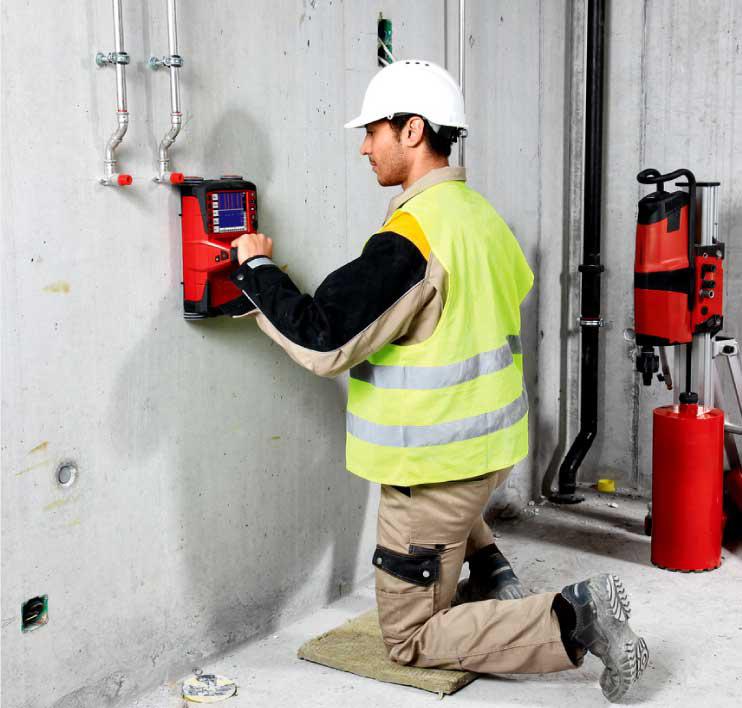Enhance Task Performance with RainierGPR Concrete Scanning Providers
Harness the Strategic Side of Concrete Scanning for Unparalleled Job Success and Quality Assurance
In the world of contemporary building and construction and facilities development, the application of concrete scanning modern technology has emerged as an essential device for ensuring project success and maintaining high quality requirements. The real power of concrete scanning exists not just in its capacity to enhance project outcomes yet additionally in its capacity to reinvent typical techniques, establishing a new standard for precision and effectiveness in the building and construction industry.
The Importance of Concrete Scanning
Concrete scanning is a vital action in building and construction tasks to make certain the safety and security and honesty of structures. By utilizing various scanning technologies such as Ground Permeating Radar (GPR) and electro-magnetic induction, building and construction teams can non-destructively examine the subsurface of concrete structures to determine possible risks like rebar, conduits, or post-tension wires. This information is essential for project service providers, supervisors, and engineers to make enlightened choices and stay clear of costly mistakes during the building and construction process.
Among the key reasons that concrete scanning is so essential is its ability to avoid accidents and injuries on the construction website. Inadvertently reducing with an online electrical avenue or damaging post-tension wires can have catastrophic consequences, not just in regards to safety but likewise in terms of job delays and financial implications. By conducting detailed concrete scanning before any kind of exploration, reducing, or coring activities, building groups can minimize threats and develop a more secure working setting for every person included.
Along with safety and security factors to consider, concrete scanning also plays a key function in ensuring the lasting durability and high quality of the structure. By detecting any type of anomalies or issues hidden underneath the surface, such as voids or delamination, very early intervention can be applied to deal with these problems prior to they rise into more significant issues. Inevitably, buying concrete scanning is a proactive step that can conserve time, cash, and resources over time, while likewise upholding the greatest criteria of construction excellence.
Advanced Technology for Exact Outcomes

By integrating these sophisticated modern technologies right into concrete scanning techniques, building and construction groups can simplify operations, reduce project delays, and guarantee the total top quality and success of the project. The precision and efficiency provided by these devices contribute substantially to the job's success by helping with informed developing and decision-making top quality assurance measures.
Enhancing Project Efficiency and Timelines

Additionally, concrete scanning enables teams to identify possible risks and architectural weaknesses at an early stage, permitting punctual remediation and stopping crashes that can derail project timelines. The real-time data supplied by scanning devices facilitates notified decision-making, leading to smoother sychronisation among different trades and stakeholders. This improved partnership lessens problems, boosts productivity, and ultimately speeds up job shipment.
In addition, by proactively resolving concerns with concrete scanning, building teams can follow schedules more effectively, lower downtime, and enhance resource allocation. The capacity to identify surprise challenges and confirm structural integrity efficiently adds to total task effectiveness and timelines, making certain effective end results and customer satisfaction.
Ensuring Safety and Risk Mitigation

Threat reduction approaches can be boosted through the detailed information offered by concrete scanning, allowing right here job teams to see this page make educated decisions that decrease the probability of unforeseen cases. Additionally, by accurately drawing up subsurface conditions, service providers can prevent pricey rework, delays, and damages to existing structures, better adding to total job security and success. Executing concrete scanning as a regular practice not just makes sure a more secure work setting however also imparts self-confidence in stakeholders relating to the task's commitment to high quality and threat management.
Top Quality Assurance Via Concrete Scanning
Concrete scanning plays a critical role in supporting quality assurance criteria within construction jobs. By making use of advanced scanning innovations such as Ground Penetrating Radar (GPR) and Concrete X-ray, task supervisors and engineers can make certain the integrity and high quality of concrete structures. With concrete scanning, potential problems, such as voids, cracks, or reinforcing bar blockage, can be detected non-destructively, enabling timely treatments to maintain the structural stability of the job.
Quality assurance through concrete scanning not only assists in recognizing existing concerns yet also enables positive procedures to stop future problems that might endanger the safety and long life of the structure. By carrying out complete scans at key phases of building, teams can confirm the accuracy of architectural plans, validate the positioning of important elements, and deal with any deviations without delay. This aggressive strategy reduces rework, decreases pricey delays, and ultimately leads to the shipment of premium, long lasting frameworks that exceed or fulfill industry standards.
Conclusion
In conclusion, concrete scanning plays a crucial function in making certain project success, performance, quality, and security guarantee. The calculated edge supplied by concrete scanning permits for aggressive risk mitigation and improves general task management.
In the realm of contemporary construction and infrastructure development, the usage of concrete scanning modern technology has actually arised as a crucial device for making certain project success and maintaining quality standards. By integrating these innovative modern technologies right into concrete scanning techniques, construction teams can streamline workflows, reduce task hold-ups, and make sure the general high quality and success of the job.Offered the important nature of more information job effectiveness and timelines in building administration, the emphasis currently changes in the direction of ensuring safety and mitigating risks within the job environment.Concrete scanning plays a critical function in promoting quality assurance criteria within building projects. By making use of sophisticated scanning technologies such as Ground Permeating Radar (GPR) and Concrete X-ray, job managers and engineers can ensure the stability and high quality of concrete structures.